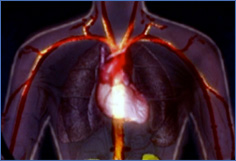

 |

|
|
|
A Seven-Part Series Bundled into Four Television Hours The opening 56-minute episode, “In Sickness and In Wealth,” presents the series’ overarching themes. Each supporting half-hour episode, set in a different ethnic/racial community, provides a deeper exploration of how social conditions affect population health and how some communities are extending their lives by improving them. DVD Chapter Descriptions (PDF) DVD Chapter Times Chart (PDF)

What are the connections between healthy bodies, healthy bank accounts and skin color? Our opening episode travels to Louisville, Kentucky, not to explore whether medical care cures us but to see why we get sick in the first place, and why patterns of health and illness reflect underlying patterns of class and racial inequities. The lives of a CEO, a lab supervisor, a janitor, and an unemployed mother illustrate how class shapes opportunities for good health. Those on the top have the most access to power, resources and opportunity – and thus the best health. Those on the bottom are faced with more stressors – unpaid bills, jobs that don’t pay enough, unsafe living conditions, exposure to environmental hazards, lack of control over work and schedule, worries over children – and the fewest resources available to help them cope. The net effect is a health-wealth gradient, in which every descending rung of the socioeconomic ladder corresponds to worse health. And it’s not just the poorest among us who are suffering, but the middle classes too. Louisville Metro Public Health Department data maps reveal 5- and 10-year gaps in life expectancy between the city’s rich, middle and working-class neighborhoods. We also see how racial inequality imposes an additional burden on people of color. But how do racism and class get under the skin? Experiments with monkeys and humans shed light on chronic stress as one culprit. Like gunning the engine of a car, constant activation of the stress response wears down the body’s system, resulting in higher rates of disease and early death. Compared to other countries, the U.S. has the greatest income inequality – and the worst health. Today, the top one percent of Americans owns more wealth than the bottom 90% combined. Economic inequality is greater than at any time since the 1920s. One out of every 5 children in the U.S. lives in poverty (21%) compared with approximately 4% of Sweden. Social spending makes up most of the difference: in Sweden, social spending reduces child poverty by 70%, while in the U.S. it reduces child poverty only 5%, down from 26%. Solutions being pursued in Louisville and elsewhere focus not on more pills but on more equitable social policies. Louisville’s new Center for Health Equity is the first of its kind: a collaboration between community members, local government, private business and health care organizations focusing on the social conditions that underlie our opportunities for health and wellbeing. « Back | Next »
|
|
|||
|